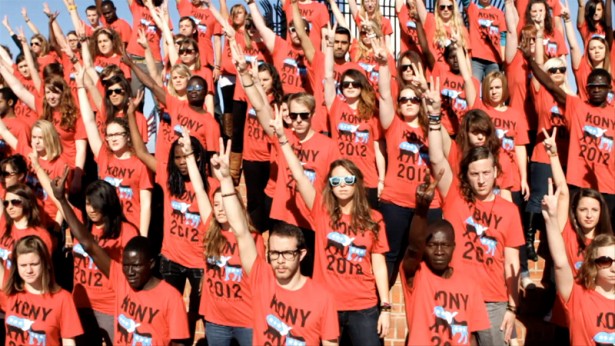The following is reblogged from Laurie Goering with the Thomson Reuters Foundation.
//
With efforts to curb climate change bogged down by virtually every mistake in the book – messages delivered in impenetrable jargon, no clear way for individuals to take action, a focus on doomsday scenarios – campaigners might take some lessons from Ben Keesey.

He’s an activist who helped create the uber-viral KONY 2012 film. Its aim was to spark public pressure to capture Joseph Kony, leader of Northern Uganda’s Lord’s Resistance Army, and end the militia’s brutal abduction of children to serve as fighters and sex slaves.
Since it was released, the social media sensation has been viewed by close to 100 million people, and has contributed to a resolution in the U.S. Senate against Kony, as well as a decision by the African Union to send troops after the indicted war criminal.
Two years later, Kony – admittedly – is still at large, and the KONY 2012 movement has faded somewhat. But deaths have fallen 93 percent in the region of Africa affected by the Lord’s Resistance Army, Keesey said. And his ideas on what drives people to action have plenty of resonance for efforts to build a stronger movement to limit climate change.
What works?
First, Keesey said, it’s crucial to realise that while you may care deeply about an issue and see the need for action as obvious, few others do. In fact, probably “nobody cares,” he told a session on how to create effective campaigns at the Skoll World Forum on Social Entrepreneurship this week.
To counter that, you first have to “change the way people feel, then think, then act,” he said. That means telling a compelling story about the problem, preferably through the eyes of an individual people can relate to. Having one villain it’s possible to stop also helps, he said – which could be somewhat of a problem when it comes to climate change.
Just as important, though, is understanding that when trying to communicate the problem, “the greatest sin is boring”.
“When you’re dealing with something as important as what we’re dealing with, the greatest sin is not putting in the energy to make it engaging,” he said.
WAYS TO ACT
His organization – Invisible Children Inc. – initially created dense, fact-filled information packs on the conflict involving the Lord’s Resistance Army, as a first step to win support to stop it. That awareness effort went nowhere, particularly with the young people Keesey was trying to get onside.
Eventually, the organization pared back the information, focused in on one story, and went for a flash rather than dutiful details. This time, the campaign went viral.
Keesey concedes that the process of building a network of young supporters for his battle had started years earlier, as he and his friends went around United States, sleeping on sofas and talking at thousands of high schools about the problem children were facing in Northern Uganda.
Those core supporters, familiar with the problem, were the ones who later helped drive the video out to their friends via social media, met with legislators to demand action, and turned KONY 2012 into an overnight success.
Crucially, the video also gave viewers a concrete way to take action and channel their anger at the situation. It urged them to share the video with friends and family, and take additional steps such as calling legislators or putting up posters.
How effective was it? President Obama’s daughter, Malia, received the video from one of her friends, and played it to her father that evening over dinner, Keesey said.
“We showed young people they could be part of making change,” Keesey said.
Think people should hear about this?